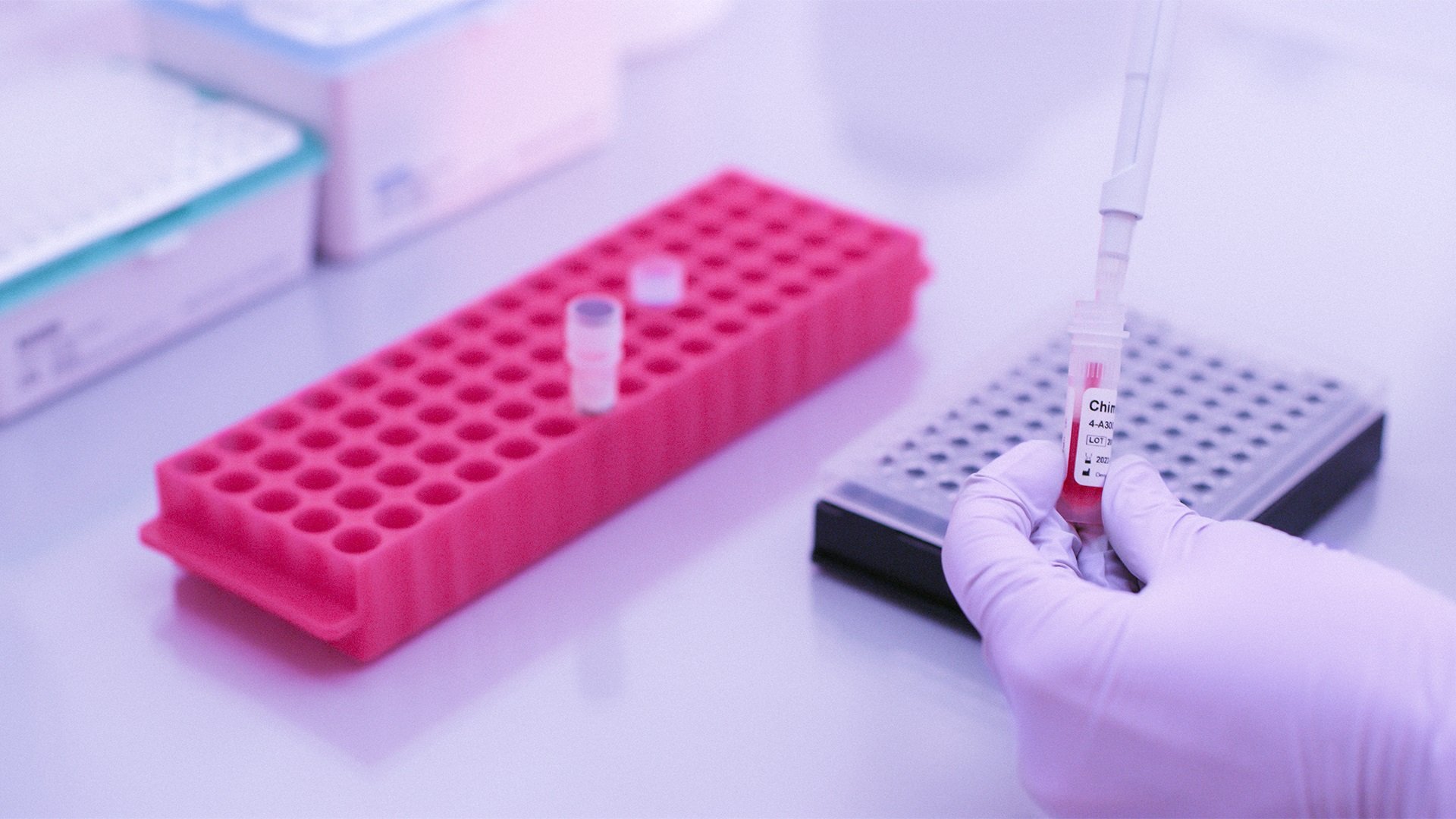Devyser wins Norwegian tender for Devyser CFTR at Oslo University Hospital
Devyser is proud to announce that the company has been awarded a tender by Oslo University Hospital...
Post-transplantation

Post-transplantation | February 24, 2023
Hematopoietic stem cell transplantation (HSCT) is the only curative treatment for patients with malignant or non-malignant hematological diseases. Although the outcome after HSCT has improved substantially over the years, allogeneic stem cell transplantation is still associated with several potential complications including toxicity related to the pre-treatment, infections, immune reactions such as graft-versus-host-disease (GVHD) and recurrence of the underlying malignant disease.
Chimerism analysis remains an important diagnostic tool for monitoring patients after hematopoietic stem cell transplantation (HSCT). Most biomolecular laboratories serving stem cell transplantation centers, therefore, offer chimerism monitoring in their diagnostic portfolio. To date, several technical solutions for chimerism monitoring are available, with short tandem repeats (STR) being the most commonly available method.
Chimerism analysis serves three different diagnostic purposes:
(I) detection of engraftment
(II) detection of threatening rejection and
(III) monitoring of potential relapse in patients with increasing measurable residual disease (MRD).
Monitoring for engraftment and rejection may well be served using methods such as STR-based analysis or NGS-based analysis. However, monitoring for potential relapse requires sensitive techniques with a limit of detection below 1 %, such as digital PCR, real-time quantitative-PCR or Next Generation Sequencing (NGS). Furthermore, split chimerism, that is chimerism analysis in selected blood cells harbouring the malignant disease, further increases the sensitivity of the analysis.
Micro-chimerism is defined as mixed chimerism (MC) <1 % in the sample of interest and may be of importance when chimerism is analyzed in the context of MRD and relapse. Studies have shown that progression of MC to complete donor chimerism (CDC) generally occurs in the first 1–2 months post-HSCT and association with relapse risk is mainly found for patients with persistent increasing mixed chimerism (IMC).
The role of IMC was addressed by a team from the Karolinska University Hospital in Stockholm. They were interested in whether the kinetics of achieving CDC below 1% could be associated with outcome in acute B-lymphoblastic leukemia (B-ALL). In the study by Lindahl and co-workers from 2022, they presented a single centre retrospective study of all hematopoietic stem cell transplantations for B cell acute lymphoblastic leukemia performed during the years 2005–2021 (n = 138, including 51 children). The purpose of this study was to identify the optimal use of lineage-specific recipient-donor chimerism analysis for prediction of relapse in ALL. Interestingly, although B-ALL (B-lymphocytes) was studied, relapse was associated with increased recipient chimerism in CD3+ bone marrow cells (T-lymphocytes) which had been sampled at least 30 days before a relapse in adults. Relapse could be predicted with a sensitivity of 73% and a specificity of 83%. Similar results were obtained for children but with a higher recipient chimerism cut-off.
These results suggested that high-sensitive lineage-specific chimerism analysis can be used for
(1) early B-ALL relapse prediction by longitudinal chimerism monitoring in CD3+ bone marrow cells and
(2) relapse risk stratification by analyzing CD3+ blood cells early post-HSCT.
In summary, this paper highlights the importance of the interaction of the donors immune system (Bone marrow derived donor T-lymphocytes) with the leukemic cells which could be used to understand immune system and leukemia interactions and serve as a predictive marker for relapse. Donor T-lymphocytes appear to have an important role in orchestrating the immune response against the leukemia and achievement of CDC could prevent increasing measurable disease (MRD) and relapse. Therefore, it appears to be important not only to monitor leukemias with disease-specific markers but also to use split-chimerism as a diagnostic tool to understand the interplay of the immune system with the leukemia.
Lindahl H, Valentini D, Vonlanthen S, Sundin M, Björklund AT, Mielke S, et al.
Early relapse prediction after allogeneic hematopoietic stem cell transplantation for acute lymphoblastic leukemia (ALL) using lineage-specific chimerism analysis. eJHaem. 2022;1–10.
Read the article -->here

Devyser is proud to announce that the company has been awarded a tender by Oslo University Hospital...
Read More

Devyser, a leading provider of advanced genetic testing solutions, has been awarded a new tender in...
Read More

Devyser is proud to announce that One Lambda Devyser Chimerism and Advyser Chimerism have been...
Read More

Devyser today announced that the Centers for Medicare & Medicaid Services (CMS) has issued its...
Read More